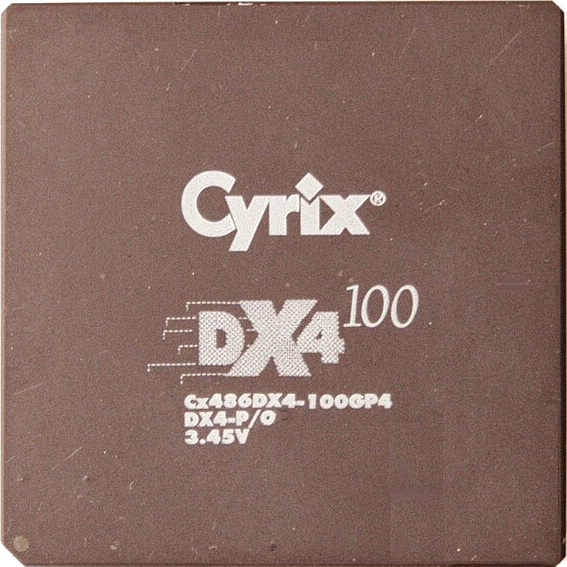deleted by creator
- 0 Posts
- 19 Comments
I’ve always wondered how close to reality those tracks were. They certainly look nice. Same with the Dirt Rally games. Good to know they put in the effort to actually make them accurate.
No worries! That’s okay! :)
I would love to give Hypnospace Outlaw a try! Thanks for the giveaway! Every once in a while a take out an old PC to play some DOS or early Windows games. Recently i played Lotus III on DOS. I still like the game’s soundtrack. :)

 1·1 month ago
1·1 month agoYeah, that’s mostly because performance is so poor without it.

 1·1 month ago
1·1 month agoand that your cpu might not be able to provide enough data.
That also depends on the settings and resolution you plan on playing with. The higher the visual settings and resolution, the more demand is on the GPU. So when you plan to play on very high visual settings at a high resolution, a higher end GPU might make sense even with an older CPU.

 5·1 month ago
5·1 month agoI am pretty sure that this is not true. While Intel Arc GPUs really should be paired with a mainboard with resizable BAR for performance reasons, they will still work without it, although with pretty bad performance.

 62·2 months ago
62·2 months agoThe worst part is that Nextcloud isn’t even really in competition with Google. Setting up a Nextcloud server isn’t hard, but it’s not a trivial task. Sharing it outside your local network also requires a bit of skill, especially if done securely. That is to say, Nextcloud users probably tend to be more tech-savvy.
That’s only true for those who self-host this. There are lots of companies offering Nextcloud hosting. That’s probably why Google doesn’t like Nextcloud. I’m not saying Google is right. Actually what Google is doing here is quite pathetic.
oldschool computer processor
A stock Amiga 1200 wouldn’t allow you to run Linux, because the CPU doesn’t have an MMU (memory management unit). With a turbo card installed with at least a 68030 and enough RAM you could run Linux on a 1200 though.
Same with GrapheneOS.

 5·3 months ago
5·3 months agoSure, I’m not saying this never happens, but I’d argue this is the exception not the rule. Especially when it comes to DDR5 which is still quite new, so there should not be that many laptops with dead batteries with such memory around yet. It would be a different story with DDR4, not that I would suggest that they use DDR4. And the SSD form factor they used isn’t very common, so it is probably even less likely that people have such SSDs lying around. I still appreciate that they allow me to buy the machine without memory/storage.

 10·3 months ago
10·3 months agoThe point of the DIY edition is that you could just reuse some old RAM or SSDs.
In theory, yes. I don’t think it is very likely that people have DDR5 SO-DIMM modules lying around, let alone 2230 SSDs. I don’t understand why they weren’t able to go for the way more common 2280 form factor for the SSD at least.

 1·3 months ago
1·3 months agoI’m not sure why you think manufactuers of SoCs (or entire phones) - which aren’t used by Google directly (as in: used by Google in their own products or sold by Google as their own product) - provide drivers to Google. They don’t, because there is no point in doing that. This is not how the Android eco-system works or the business of selling those SoCs for that matter.
SoC manufactuers sell their SoCs to companies who want to build Android phones (or they build their own like Samsung). With those SoCs they provide a BSP (board support package) that includes all the bits needed to bring up a system running on that partricular SoC. Google has pretty much nothing to do with this, except that Google recommends a certain Linux kernel version (with a bunch of Android-specific patches) for a given Android version, which SoC makers often (but not always) use as the base for their customized kernels.
It is not like Google provides the operating system including all device specific drivers to the device manufacturers. They don’t care about that at all. They provide AOSP (which is open source, so anyone can get that) as well as their proprietary stuff like Google Play etc. That’s pretty much it.
There is a lot not to like about many Android phones (or rather smartphones in general), when it comes to their openness in regards to software. And it is perfectly fine to criticize those involved, but you should direct your criticism at the correct parties. Google isn’t the bad guy in this instance.

 41·3 months ago
41·3 months agoYou are talking about phones made by Google. I am talking about ALL the phones using Android and how difficult or sometimes impossible it is to use anything but Android.
That’s not what you were saying. You were explicitly talking about Google. Also, implying it is Google’s fault that other manufacturers don’t let you install other operating systems easily is pretty bizarre. If you want to complain about that, at least complain about the right companies. Those are usually the phone manufacturers and/or the SoC manufacturers. The SoC manufacturers often times are particularily problematic, since they often do not publish open source drivers at all or in a very limited fashion.

 4·3 months ago
4·3 months agoNo, unlock as in: You can install whatever operating system you want. No need for “jailbreaking” on Google phones. They officially support unlocking the bootloader (and re-locking it later as well!). There are many things not to like about Google, but how they handle their phones when it comes to openness is certainly not one of them. Pretty much all other phone vendors are much worse than that (except for maybe a few small ones like Fairphone).

 21·3 months ago
21·3 months agoHow about not letting Google have exclusive rights to the drivers for all the phone hardware?
What exactly do you mean by that? Google is one of the few companies that let you easily unlock their phones so you can do whatever you want with them.

 12·4 months ago
12·4 months agoThis is pretty neat. If this was a real museum, you’d have to do a lot of walking, that’s for sure!

 2·4 months ago
2·4 months agoPerhaps a Raspberry Pi 500 (or the older Raspberry Pi 400), can do all the things an ordinary Raspberry Pi can, but comes as a complete device with built-in keyboard. Runs Linux and is rather easy to use.



All this is correct, but keep in mind that you still leak domain names until ECH (encrypted client hello) is in wide-spread use. It is of course still a good idea to use encrypted DNS, just don’t assume your ISP can’t see which websites you are accessing.